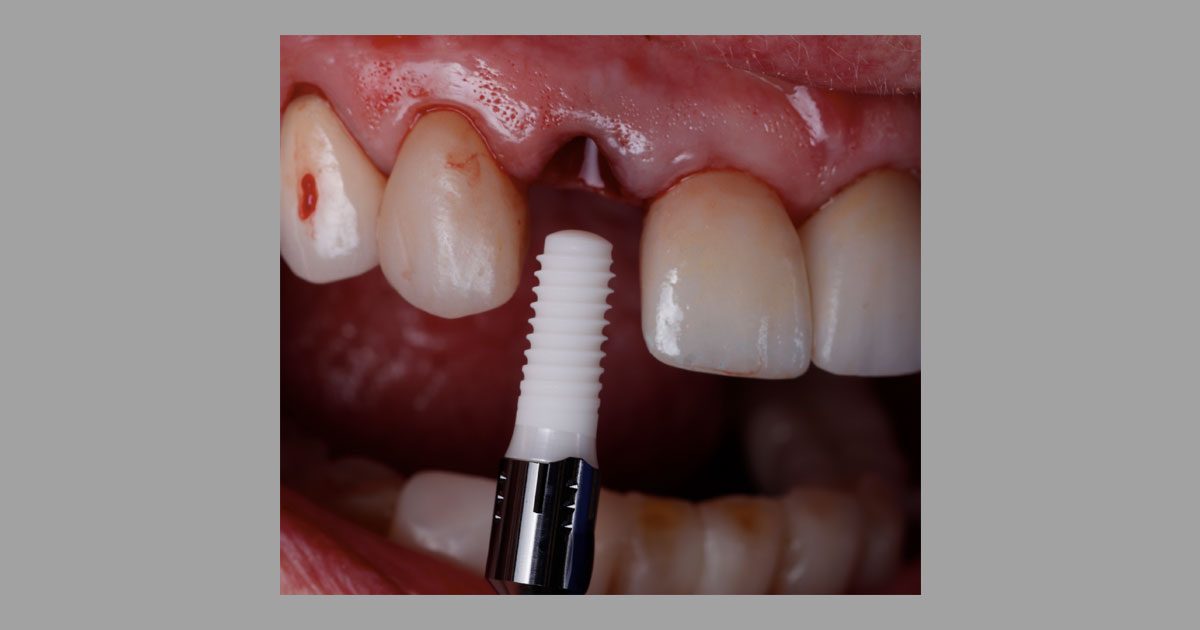There was a time when a three unit bridge was the most accepted replacement for a missing tooth. Few would disagree that an implant retained crown is today routinely the preferred method of replacing missing teeth.
In the last few years the popularity of ceramic dental implants has risen. In fact nearly every major manufacturer of traditional titanium implants today has a ceramic product either in their product line or in the pipeline.
How do these ceramic implants compare to the traditional titanium ones?
Well if you were going to replace a tooth do you want one that is metal black or ceramic white? In a thin gingival biotype the advantage of a white implant is clear. But is that it? Is it only the fact that it’s white? Well no, there is more to ceramic implants than just the white colour, but in dentistry where we want aesthetics the white colour is a real advantage!
The real problem with titanium implants today is… drum-roll please….. Peri-implant disease. The literature points to somewhere between 10-25% of cases are affected by adjacent tissue breakdown. The evidence shows that there is less disease around ceramic implants. This may be attributed to the fact that there is less bacterial adhesion to zirconia and that tissue is healthier adjacent to the ceramic surface. The tissue health around ceramic implants is really the reason that attracted me to them and catapulted my interest in this branch of dental implantology.
Every practitioner that places and/or restores dental implants knows that the health of tissue adjacent to most implants is not the same as the health of tissue around teeth. The major advantage of ceramic implants today is that the response and healing of the sott tissues and the maintenance of soft tissue architecture around ceramic implants is more similar to teeth than the tissue surrounding titanium implants.
What about strength? The biggest fear of ceramic implants is fracture especially with the unsuccessful alumina ceramic implants of the 1970’s, but with zirconia is that fear justified? Well, it is if the implant is a narrow body implant, ceramic gets its strength from bulk if too thin it will break. But the implants that are on the market today all have sufficient bulk and fatigue strength to withstand the forces of mastication and more. In my personal experience of nearly 10 years there is no fear of fracture, in fact there are more fractures of abutment and prosthetic screws and titanium implant bodies.
To learn more about ceramic implants and how they can be used in your practice check out the Ceramic Implant Dentistry Masterclass.


